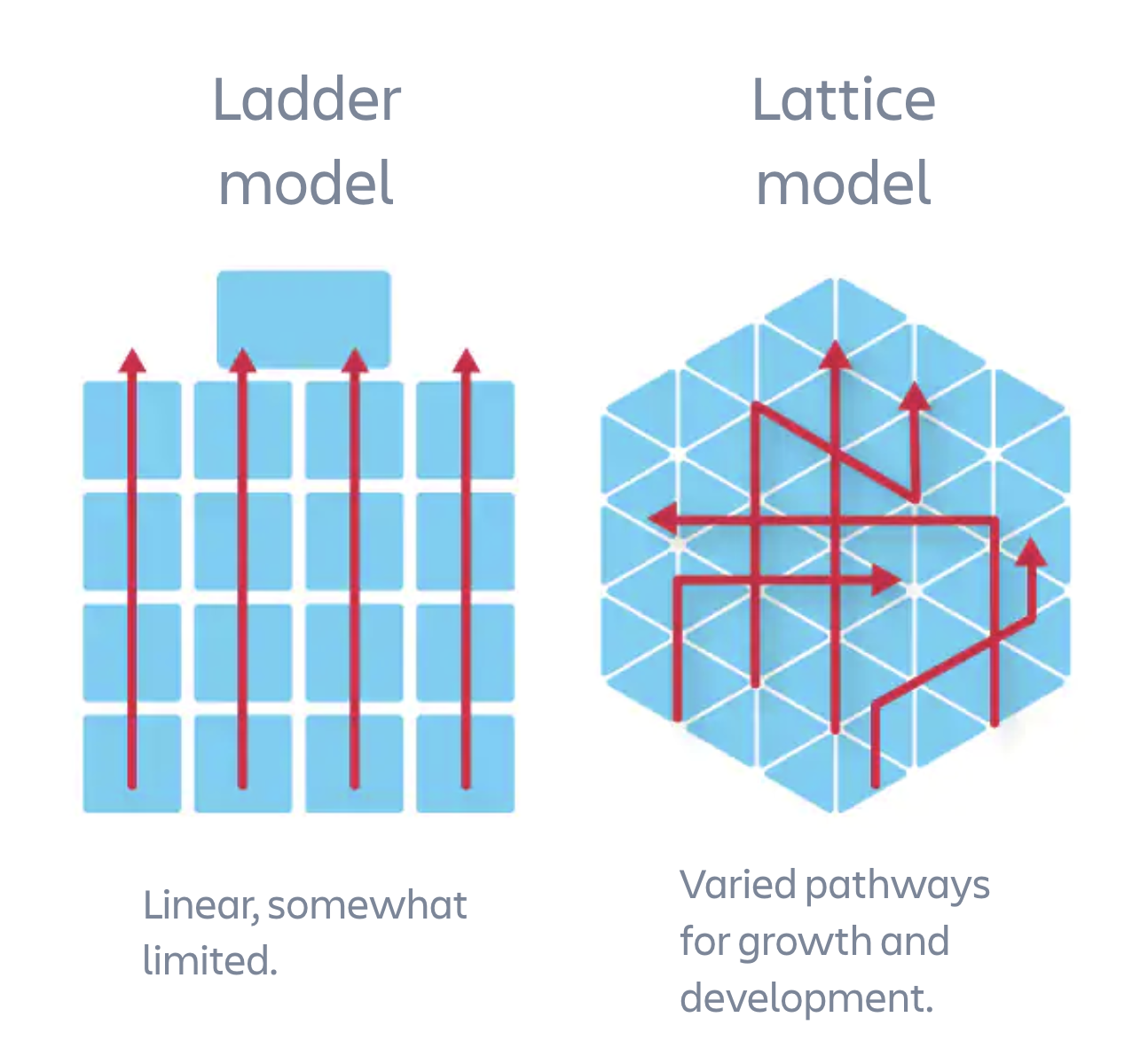The past several months have brought, among other things, some time to reflect. Among the topics I’ve been mulling over are my own work and career path, which has been far from the linear progression that aligns with what many people consider the canonical “right path.”
The truth is, I’ve been a software engineer, product manager, software architect, and leader, and held several other roles. I’ve worked on projects for Xbox, Microsoft, NASA, and Facebook. I’ve been both an employee and a customer of Deloitte. And while it’s easy to over-rotate on one project or role vs. another, one thing has become very clear: my non-traditional path is shared by many other IT leaders. And you know what? I think we’re stronger for it.
Let me explain.
Moving up the ladder wasn’t always the best path for me
Historically, upward career mobility was the preferred professional development path – and for many people, it still is. You move up the ladder in a linear, single-file direction as your career progresses. In more traditional jobs – including some that I’ve had – this literally meant that the person in front of you (or higher up the ladder) had to leave the company for you to move up to the next step on the ladder.
While this model was good for many, I’ve never put too much emphasis on chasing the next title or promotion. I’m very curious, bored by doing the same thing over and over again, and constantly driven to learn. So, waiting for the ladder step to magically appear in five years wasn’t in the cards for me. Why wait, when you could be learning something new in another department?
So I made a lot of these horizontal moves in my quest for a new area of the business that I could throw myself into. While historically the lateral move carried a bit of a stigma, I found that there were many benefits that weren’t being discussed or praised nearly as much as the Big Promotion Up the Ladder™.
This was the topic of a recent conversation with a colleague, who shared the “ladder vs. lattice” model below, which pretty well captures how I was feeling. Once you open your mind to the idea of moving sideways or diagonally, it’s easy to see how many more paths to success are available to you.

Benefits of the lattice model
First off, let me say that both models are designed to move a person forward in their career. The difference is how you get there and what you have when you arrive at a higher level. While at first glance the lattice model appears less direct, the reality is that there are several benefits that you’re not seeing in the image above.
Accelerated learning
The lattice model allowed me to grow in different knowledge areas (and with faster timeframes) that just weren’t possible in the ladder model. Again, when you’re trying to climb straight up the ladder, there’s often a lot of waiting around for opportunities above you to open up. At Microsoft, they understood this early on. When I worked there, they would host internal job fairs for this exact reason. Employees would get the opportunity to try something new on a different team and Microsoft was able to keep good talent at the company.
Serving as a generalist and a specialist
The lattice model also provides a much better path for the reality of today’s staffing strategies. For the most part, today’s IT teams (and, I suspect many other disciplines) are putting more emphasis on hiring generalists instead of specialists who are focused on one very specific topic, industry, or technology. A generalist, for example, can be maneuvered to different teams or types of work – like a Swiss Army knife – which is needed as company and business priorities shift much more quickly than they did 15 or 20 years ago. For me, all that disparate experience actually played to my benefit: I was seen as being more valuable because of my broad scope of knowledge and my ability to be redeployed to another area of the business.
Translating and connecting the dots
Knowledge of other departments or types of work – which I gained from latticing into other teams – made me a stronger worker and leader. I saw how other teams delivered business value, learned the language of different teams (finance, marketing, etc.), forged relationships across disciplines, and uncovered backchannels that allowed me to fast-track my work and make the entire team more effective. Collectively, the experience provided me with two vital skills that every leader needs. First, the ability to connect the dots across workstreams and disciplines. And second, how to “speak the language” of several different stakeholders and teams across the company and translate it into a solution that your team can provide.
Give your career more freedom to grow
Now is the perfect time to evolve your thinking about your own career growth, especially seeing as many companies are rethinking how they organize their teams in an effort to be more nimble and resilient. Spend a few minutes perusing your organization’s job openings, even if you’re perfectly happy in your current role. You never know when a golden opportunity is going to pop up.
Plus, with all the time you’re not spending at concerts, bars, etc. right now, it’s also a good time to explore a new discipline related to your current role – much of which can be done through online course offerings. For example, if you’re a deep subject matter expert, why not learn about project management? That way, you’re set up to lead projects in your department from time to time and build your profile within your organization.
Whatever you do, don’t stay in a role you hate or reach for the next rung on the ladder simply because you think that’s what you’re supposed to do. Base your career choices on your own definition of success – not somebody else’s.













































